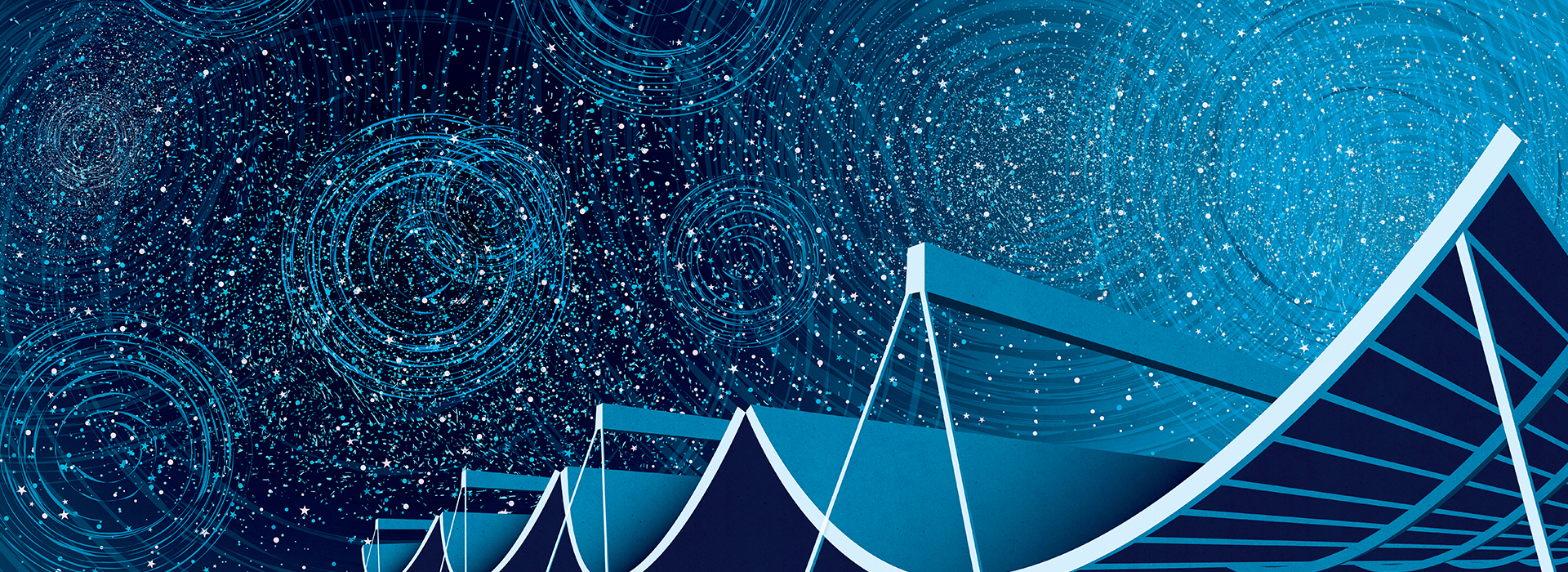By: Dan Falk
8 Mar, 2016

Victoria Kaspi, the R. Howard Webster Foundation Fellow in CIFAR’s Cosmology & Gravity program, has long been known for her groundbreaking work on exotic, ultra-dense stars.
But this winter the McGill University researcher received a particularly prestigious honour, winning the Gerhard Herzberg Gold Medal, the highest award given to Canadian scientists. The $1-million prize is awarded by NSERC, the Natural Sciences and Engineering Research Council. Kaspi is among the youngest recipients and the first woman to receive the medal in its 25-year history.
“Her science is of world-class quality,” says Christine Wilson, an astronomer at McMaster University and current president of Canadian Astronomical Society. “She absolutely deserves this honour.” Mario Pinto, NSERC’s president, called it “a significant watershed moment,” adding that it signals “to girls and young women… that it is possible to achieve NSERC’s highest honour.”
Kaspi has been a CIFAR fellow since 2002, and next year she is expected to assume the role of director of the Cosmology & Gravity program.
Kaspi was born in Texas; the family moved around quite a bit before settling in Montreal, when she was seven. And while she always loved science, she admits that her path into professional astronomy was a bit serendipitous. She had a knack for math, but that seemed too disconnected from the real world; chemistry was messy, she recalls, and biology didn’t capture her interest. That left physics – but she also loved literature, and was torn between the two. In the end, she made a pragmatic choice. “I figured I could always read good novels in my spare time, but it’s hard to do physics in your spare time,” she says.
Diving into physics as an undergraduate at McGill, Kaspi was able to complete her degree with almost no exposure to astronomy. As a result, she knew “almost nothing” about astronomy as she began her PhD at Princeton. “I just learned as I went along.”
And learn she did – especially about compact, ultra-dense stars such as neutron stars and pulsars. A neutron star is what’s left after a massive star exhausts its nuclear fuel; it explodes as a supernova, then collapses. The resulting stellar corpse is so dense that a handful of neutron-star matter might weigh as much as the Earth. Kaspi, now 48, has become a leading authority on these peculiar objects.
“In a neutron star, what you have is matter that’s unlike any kind of matter that we know of, or could produce in the laboratory,” Kaspi says. “The densities, for example, are extremely high – upwards of 10 times the density of an atomic nucleus. This is not matter that we’re used to.”
And then you’ve got pulsars – spinning neutron stars that emit radio waves at very precise intervals, like cosmic lighthouses. With their precise bursts of radio waves, typically at intervals of a few hundred milliseconds or so, pulsars can serve as “clocks” for making precise measurements of astrophysical phenomena, Kaspi explains. So if a pulsar happens to be part of a binary system – dozens of these have now been studied – they can be used to calculate various properties of the system, such as its total energy.
“The important point is that we can do tests of dynamical theories — like General Relativity and alternative relativistic theories of gravity — with unparalleled precision,” Kaspi says.
At Princeton, Kaspi worked with a group led by Joseph Taylor, who had studied a binary star system containing a pulsar. Taylor’s data showed that the system was losing energy. Seventy years earlier, Einstein had an explanation for why that would happen: such a system would radiate energy in the form of gravitational waves. Taylor’s work confirmed Einstein’s prediction, providing a strong (yet indirect) case for the existence of gravitational waves. Taylor shared the Nobel Prize for Physics with physicist Russell Hulse in 1993, the year that Kaspi completed her PhD. The first direct detection of gravitational waves, using the twin LIGO detectors (Laser Interferometer Gravitational-wave Observatory) was announced this February.
Kaspi, while not directly involved in the LIGO, has been providing gravitational wave researchers with invaluable data. (In fact, some theorists predicted that a coalescing neutron star binary system would be the most likely source of gravitational waves to be spotted; as it happened, a pair of black holes provided the first signal.) “There’s actually quite a synergy between the pulsar people, like me, and the LIGO people,” Kaspi says. “They need to know how many neutron stars are out there, and we can help to answer that, because we’re constantly surveying our own galaxy for such stars.”
These days Kaspi is excited about another peculiar astrophysical phenomenon known as Fast Radio Bursts (FRBs). FRBs appear as quick bursts of radio waves from seemingly-random directions in the sky. They appear to be quite far away, but other than that, almost nothing is known about them. But data from a new Canadian telescope project known as CHIME (The Canadian Hydrogen Intensity Mapping Experiment), in British Columbia, may finally shed some light on FRBs. Although CHIME was designed to study “dark energy,” the mysterious entity that accounts for the bulk of the universe’s energy content, it just happens to be perfectly suited to studying FRBs, Kaspi says.
The overall CHIME project has significant CIFAR participation, and Kaspi is the principal investigator for a planned extension of CHIME to study transient radio signals. She is collaborating on the extension with CIFAR fellows Ingrid Stairs, Scott Ransom, Matt Dobbs, Mark Halpern, Gary Hinshaw and Ue-Li Pen.
The Herzberg prize money will allow Kaspi to hire graduate students and post-docs to help analyze the terabytes of data that CHIME will start producing when it comes on-line next year, and to draw new talent to the interdisciplinary McGill Space Institute, where Kaspi serves as director.
Dan Falk (@danfalk) is a science journalist based in Toronto. His books include The Science of Shakespeare and In Search of Time.